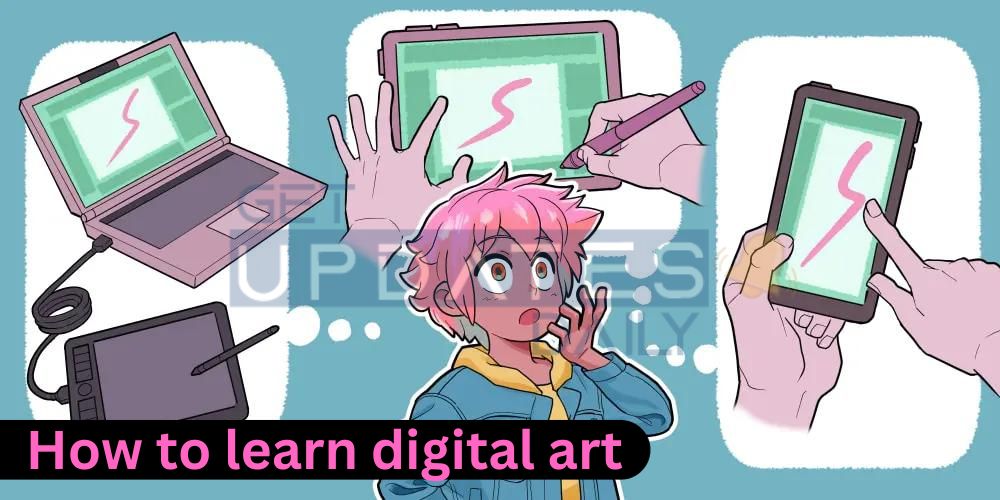A creative method called digital art allows artists to use software platforms to produce assignments. There are also lots of applications out there, and artists can often work on laptops, desktop computers, tablets, or smartphones. These platforms give artists the tools they need to create original works, edit images, and modify projects after they’ve begun them. They can also assist people in simulating a variety of artistic mediums, including pastels, painting, pencil, ink, and pen drawings.
Learning digital art can be a fulfilling journey that allows you to express your creativity through technology. Here’s a concise guide for you:
Acquire the Right Tools
Start by getting the necessary equipment. You’ll need a computer or a digital drawing tablet with a stylus. There are various options available, ranging from high-end to budget-friendly. Select the hardware that suits your budget and artistic goals. Additionally, choose digital art software, such as Adobe Photoshop, Corel Painter, or free alternatives like GIMP or Krita. Experiment with these programs to find the one that aligns with your style.
Learn the Basics
Begin your digital art journey by understanding the fundamental concepts of your chosen software. Familiarize yourself with tools, brushes, layers, and shortcuts. Online tutorials and beginner’s guides are excellent resources for learning how to navigate the software’s interface and capabilities. Starting with the basics will build a solid foundation for more advanced techniques.
Practice and Experiment
Practice is crucial in digital art. Start with simple sketches to get comfortable with the digital medium. Gradually progress to more complex subjects and styles. Experiment with different brushes, textures, and settings to understand the tools at your disposal. You should not be scared to make mistakes because they serve as crucial teaching moments. Your skills will improve the more you experiment and practice.
Like A Similar Post – Digital Citizenship
Study Techniques and Styles
Delve into digital painting techniques, such as blending, shading, and highlighting, to add depth and realism to your artwork. Learn about color theory and its application in digital art. Explore various styles and effects, from realism to abstraction, to find your unique artistic voice. Analyze the work of established digital artists to gain inspiration and insights into their techniques and creative processes.
Seek Feedback and Create a Portfolio
Share your work with others, whether on social media, in art communities, or with fellow artists. Constructive feedback is invaluable for improvement. Build a portfolio showcasing your best work; this is essential if you aspire to pursue a career in digital art. Update your portfolio frequently to show off your progress and change your sense of style. Set clear goals and enjoy the process of creating digital art, and you’ll find that your skills and creativity will flourish over time.


